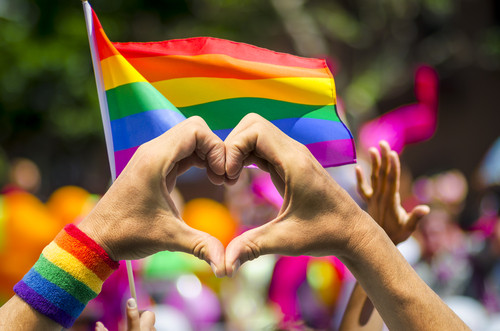June is LGBTQIA+ Pride Month.
This month provides an opportunity to celebrate and highlight the LGBTQIA+ community’s contributions to STEM, as well as learn about current and historic barriers to inclusion.
Why is this important? Read this article by 500 Queer Scientists about the exclusion, harassment, and assault some LGBTQIA+ people are still facing in STEM workplaces.
A Brief History of Pride Month…
The first Pride parades marked the anniversary of the Stonewall uprising, when police raided the Stonewall Inn on Christopher Street in New York City after midnight on June 28, 1969.
That night, after growing tension, police stormed the gay bar and arrested multiple people. Patrons resisted. Riots broke out between patrons and police. The uprising lasted six days.
“For me the reason to remember the Stonewall uprising is in recognition of the daily acts of courage the rioters took that got them to the bar that night,” wrote Katherine Ott, curator at the Smithsonian’s National Museum of American History. For the 50th anniversary of the uprising in 2019, she reflected on its role in the broader scope of LGBTQ+ history.
Stonewall was solidified as a key moment in the LGBTQ+ civil rights movement by the marches that began a year later. In New York City, the Christopher Street Liberation Day March is considered the city’s first Pride parade. Today, June is celebrated as LGBTQ+ Pride Month in commemoration of the event.
Source: Marsha Johnson, Sylvia Rivera, and the history of Pride Month, Smithsonian Sparks, June 7, 2021
LGBTQIA+ Role Models in STEM, Just to Name a Few.
Alan Turing – Mathematician and inventor of the Enigma machine which helped to decode Nazi Germany’s secret communications.
Angela Clayton – Physicist and trans rights advocate with the organization Press for Change.
Angelica Ross – Founder and CEO of TransTech Social Enterprises
Ann Mei Chang – Former Chief Innovation Officer at USAID
Arlan Hamilton – Co-founder and CEO of Backstage Capital
Ben Barres – Neurobiologist at Stanford University and the first openly trans man to be offered membership to the prestigious National Academy of Science.
Calcifer Phillips – Physics Ph.D. candidate at Northern Illinois University and Closing the Gap podcast guest speaker.
Edith Windsor – Software engineer and computer programmer who held senior roles at IBM. Advocate for LGBTQ rights and marriage equality.
Florence Nightingale – Referred to as the founder of modern nursing. Nightingale played a key role in helping wounded soldiers in the Crimean War.
Lauren Esposito – Arachnologist and founder of 500 Queer Scientists
Leanne Pittsford – Founder and CEO of Lesbians Who Tech
Leonardo di Vinci – Artist and inventor, who made significant contributions to various fields of the sciences and the arts.
Louise Pearce – A Pathologist who helped develop a treatment for a deadly African sleeping sickness.
Nova West – Artist and filmmaker specializing in science and oceanography communication. Guest speaker on the Closing the Gap podcast.
Sally Ride – The first American woman to travel to space.
Sara Josephine Baker – A Physician who worked to improve infant mortality rates.
Sir Francis Bacon – “The father of modern science,” Bacon developed the scientific method of investigating a hypothesis.
Sir Isaac Newton – The first scientist to understand how gravity works.
Resources for Teaching About LGBTQIA+ Contributions to STEM Research:
- 27 LGBTQ+ Scientists and Tech Leaders Shaping Our Future
- 500 Queer Scientists – Stories
- Queering STEM: The Need to Revolutionalize How Science Gets Done | Lauren Esposito | TEDxBerkeley
- Out in Science 2022: Queer Futurism in STEM
- Diving For Rays: A Queer Conservationist’s Story
Professional Groups and Networks for LGBTQIA+ people and allies in STEM:
- 500 Queer Scientists
- LGBTQ+ STEM
- National Organization of Gay and Lesbian Scientists and Technical Professionals
- oSTEM
- Pride in STEM
- Queer STEM
- STEM Village
- Trans in STEM


